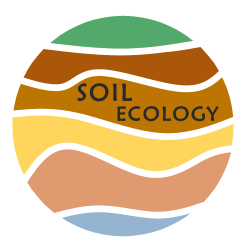| Noll, L; Leonhardt, SD; Arnstadt, T; Hoppe, L; Poll, C; Matzner, E; Hofrichter, M; Kellner, H: Fungal biomass and extracellular enzyme activitis in coarse woody debris of 13 tree species in the early phase of decomposition, Forest Ecology and Management, 378, 181-192 (2016), doi:10.1016/j.foreco.2016.07.035 | |
| Abstract: Decomposition rates of coarse woody debris (CWD) have been investigated in many studies, however data on fungal biomass and the related enzymatic activities in decomposing CWD are scarce. Here, we investigated the relations between fungal biomass, enzyme activities and CWD properties in sap- and heartwood of decomposing logs of 13 different temperate European tree species, exposed for 6 years on the ground. Fungal biomass was significantly higher in sapwood than in heartwood and higher in deciduous than in coniferous species, and represented 0.3–4.4% of CWD dry mass. In deciduous sapwood, fungal biomass may represent up to 29% of the total N stock in CWD. Fungal biomass correlated positively with the N content of CWD and, in heartwood, negatively with extractives. Enzyme activities were higher in deciduous than in coniferous CWD and for hydrolases higher in sapwood than in heartwood. Correlations between enzyme activities and the ergosterol content were generally weak. Hydrolytic enzymes were frequently found in all decaying tree species, whereas ligninolytic oxidoreductases showed high variability specifically in deciduous wood. Fungal biomass and enzymatic activities confirm the assumption that, in the initial stage, the decomposition of deciduous CWD is faster than of coniferous CWD under comparable conditions. |

